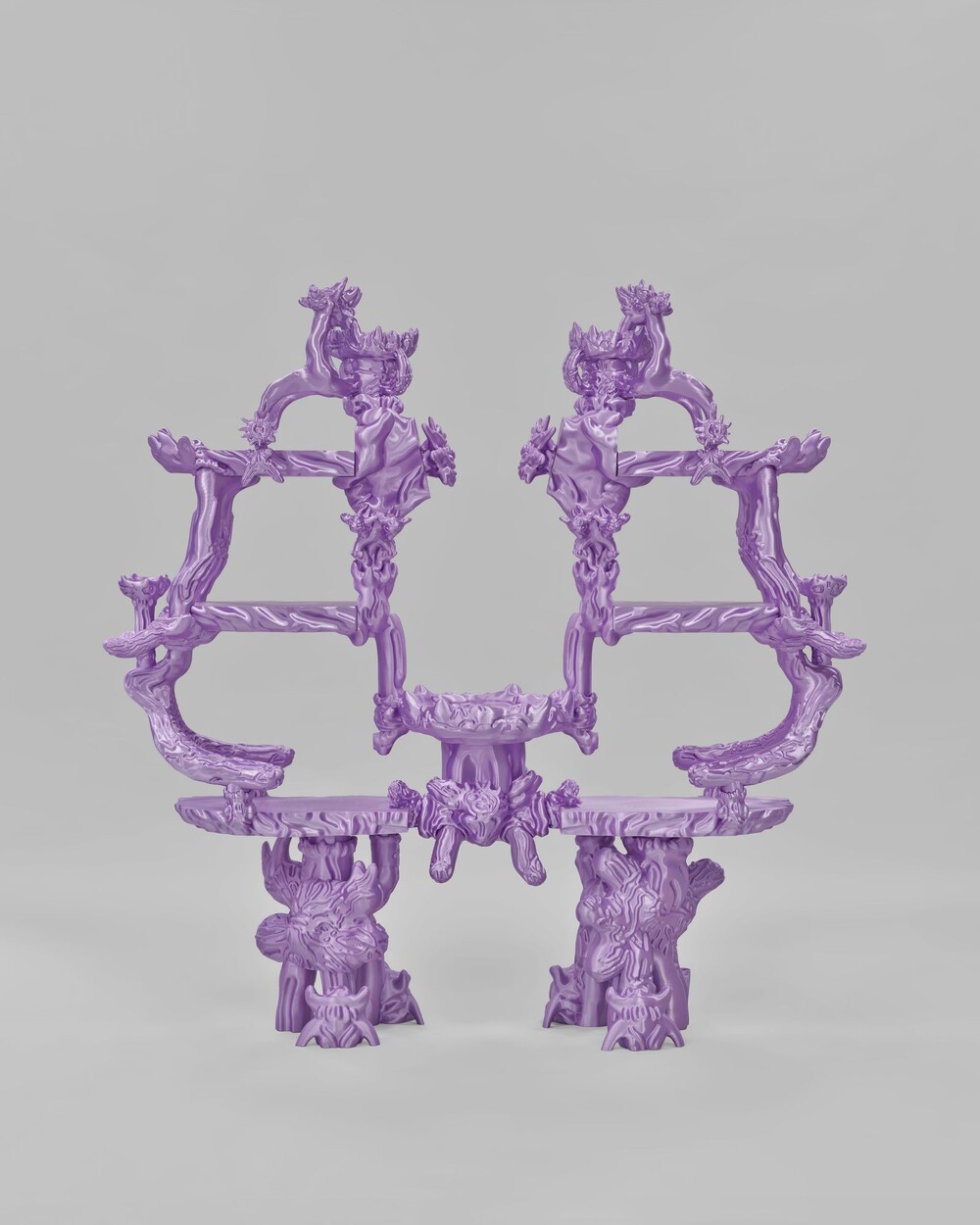Audrey Large
Morphing, oscillating, and seamlessly transforming, Audrey Large’s work is renowned for its mesmerizing impact on audiences.
Large graduated from DAE’s Social Design Masters program in 2017 with her project Life.VFX which grew out of an investigation into visual effects. Today, her fluidity across mediums continues to set her practice apart.
Her work has quickly become collected and recognised internationally. In 2021, she won the Dutch Design Award for Young Designer and she has been part of several influential residencies while participating in global design and art exhibitions. Freelance curator and writer Tiiu Meiner spoke to Large about the origin of her practice and her distinctive methodology, exploring how she adapts and navigates the intricacies of the physical-digital divide, as well as the art-design and real-unreal dichotomies.
→Tiiu Meiner: How did you start working at the boundary between digital and physical worlds? What was your graduation project, and how did that lead you to develop such a distinguished visual language for your designs?
Audrey Large: My graduation wasn’t necessarily marked by a specific visual identity or a single sculptural piece. Instead, I graduated with a methodology to visualize matter’s transition. I began by 3D scanning an object, then motion-tracked my movements using it. By combining motion tracking with the 3D object, I created unique glitches that I then 3D printed, solidifying the process into an outcome.
Post-graduation, I realised the human element was somewhat lost in my methodology. It had become more about the machine and its errors. I let go of that rigid methodology while still using this software. Then I could find my intuition and spontaneity again because I embraced not needing to explain everything and started sculpting objects myself, essentially 3D drawing. This evolved into my personal visual language.
→TM: What’s the value of recognizing ‘manual’ processes in digital creations? How do you forge connections between digital and physical objects?
AL: I try to go beyond this binary way of thinking about digital and physical. Instead, it’s really about blending the two. The objects and forms I create digitally still maintain the sense of the movement of my hands. Occasionally, there are subtle irregularities and a touch of shakiness — indications of vulnerability. The result embodies a human touch, like a handwritten note. This deliberate imperfection preserves a human quality, giving a sense of relatability and resonance.
The outcome bridges the gap between digital and physical — it makes the digital objects relatable.

“I try to go beyond this binary way of thinking about digital and physical”
→TM: Having graduated from the Social Design Masters and showcased at design fairs and art exhibitions, how do you navigate the art-design intersection? How does it influence your outcomes?
AL: After studying at Social Design, I decided to move away from working on big global issues because I felt it limited my ability for self-expression. Not to say I’m disconnecting from the world — just that my practice became more enjoyable this way.
When exhibiting within art contexts, I’m not limited to justifying my choices or making functional items. That being said, I still appreciate an object that isn’t entirely abstract, something with a hint of familiarity as a functional item. Although some sculptures may not immediately resemble everyday objects, on closer inspection, you’ll find elements reminiscent of vases or tables, hinting at the design gallery’s models. I like that I could shift between familiar and new archetypes — I find this exercise really captivating.
The perception of my practice as art or design, digital or physical, is fluid and multifaceted. The categorisation matters less to me. While these fields have distinct histories and discourses, my work’s fluidity allows a convergence of these different contexts and that enriches my practice rather than limiting it.
→TM: How important is it for your audiences to understand your whole creative methodology and research?
AL: Typically, the experience people have with my work is more about affecting perception rather than intellectual discourse. The context in which someone views it and their personal connection can shape its meaning. I welcome diverse interpretations of my work.
Regarding the separation between research and making, it’s an interesting dynamic. I’ve encountered different responses in different contexts. At first, when I graduated, some labelled me as a researcher and not a maker. I think both contribute significantly to what I do.

“Starting alone can be tough; having a support system is invaluable”

→TM: Can you talk more about the importance of self-expression in your work?
AL: After graduating, we formed a collective called MORPH together with some other people from DAE. I think our collective brought us together around the desire for self-expression and breaking boundaries. We aimed to function outside established categories, creating without fitting into pre-existing moulds.
In the midst of everything seeming chaotic in the world, creating brought a sense of well-being. Our exhibitions offered visitors the same positivity. This tiny space of freedom gave us hope. This energetic feeling resonated within me.
→TM: Do you have some advice for young designers wanting to follow in your footsteps?
AL: Avoid rushing into outcomes or trends, focusing instead on maintaining a solid foundation. I’ve always returned to my methodology and the way I perceive matter. This approach helps ensure my work isn’t just a short-lived trend but holds deeper significance and meaning.
Also, starting alone can be tough; having a support system is invaluable. Having a space outside of your home, where you’re surrounded by like-minded individuals working on their projects, provides structure. It’s beneficial to have someone to look up to, not necessarily to do the same work as them, but to learn from their positioning and practices. This kind of collective support helps shape your approach.

